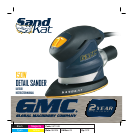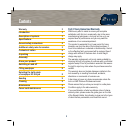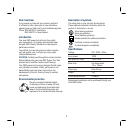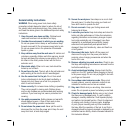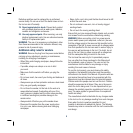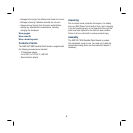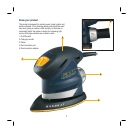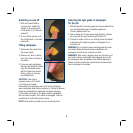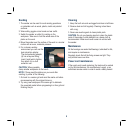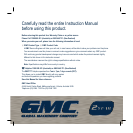
9
Sanding
1. The sander can be used for most sanding operations
on materials such as wood, plastic, metal and painted
surfaces.
2. Wear safety goggles a dust mask and ear muffs.
3. Switch the sander on whilst it is resting on the
workpiece. Take care to hold the whole area of the
platen on the work.
4. Move the sander over the surface of the work in a circular
motion with an even, moderate pressure.
5. For a cleaner working
environment you can use the
dust extraction adaptor.
The dust extraction adaptor
(5) has a bayonet fitting,
insert it and twist to tighten,
then attach it to a dust
extraction unit.
CAUTION. Where possible,
clamp smaller workpieces to the bench.
NOTE. If there are still scratches on your work after
sanding, try either of the following:
1. Go back to a coarser grit and sand the marks out before
recommencing with the original choice or,
2. Try using new sandpaper of the same grit to eliminate
the unwanted marks before progressing to a finer grit and
finishing the job.
Cleaning
1. Keep the tool’s air vents unclogged and clean at all times.
2. Remove dust and dirt regularly. Cleaning is best done
with a rag.
3. Never use caustic agents to clean plastic parts.
CAUTION. Do not use cleaning agents to clean the plastic
parts of the sander. A mild detergent on a damp cloth is
recommended. Water must never come into contact with
the sander.
Maintenance
All the bearings are sealed ball bearings, lubricated for life,
and require no maintenance.
Regularly check that all the fixing screws are tight. They
may vibrate loose over time.
Power cord maintenance
If the supply cord needs replacing, the task must be carried
out by the manufacturer, the manufacturer’s agent, or an
authorised service centre in order to avoid a safety hazard.



